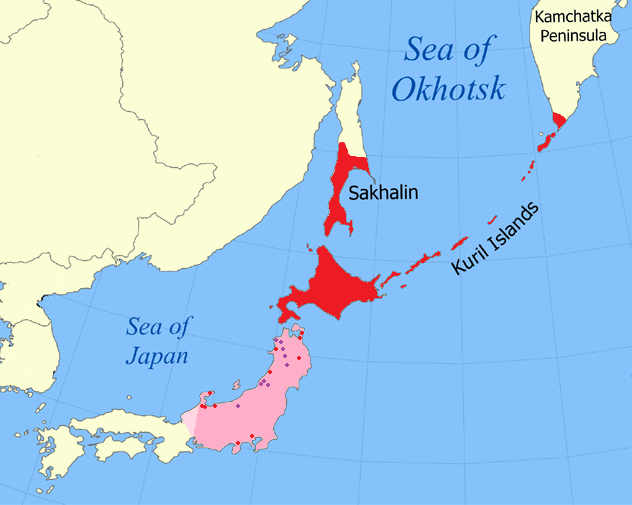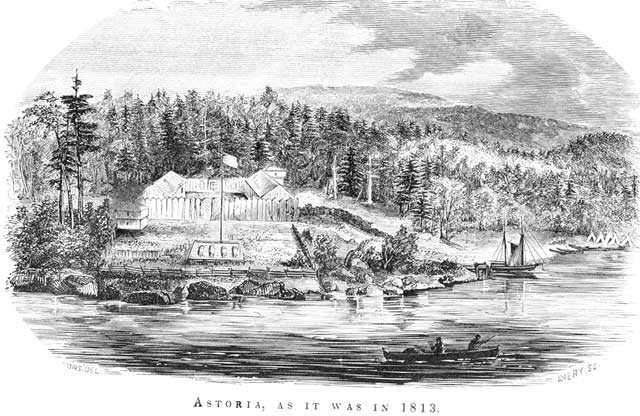|
Desmostylus
''Desmostylus'' is an extinct genus of herbivorous mammal of the family Desmostylidae living from the Chattian stage of the Late Oligocene subepoch through the Late Miocene subepoch (28.4 mya–7.250 Mya) and in existence for approximately .. Retrieved March 2013. Description ''Desmostylus'' was a large, hippopotamus-like creature, with the adult Keton specimen of ''D. hesperus'' measuring in length, in height and in body mass; the largest known humerus, which is 1.3 times that of the Keton specimen in length, probably belonged to an individual with a mass of . It had a short tail and powerful legs with four hooves. The animal's jaws were elongated and sported forward-facing tusks, which were elongated canines and incisors. Most likely fully aquatic, ''Desmostylus'' is thought to have lived in shallow water in coastal regions, usually less than 30 meters deep. Recent isotope work indicates that ''Desmostylus'' more likely lived (or spent a large amount of time) in fre ... [...More Info...] [...Related Items...] OR: [Wikipedia] [Google] [Baidu] |
Desmostylians
The Desmostylia (from Ancient Greek, Greek δεσμά ''desma'', "bundle", and στῦλος ''stylos'', "pillar") are an extinct order (biology), order of aquatic mammals native to the North Pacific from the early Oligocene (Rupelian) to the late Miocene (Tortonian) (). Desmostylians are the only known extinct order of marine mammals. The Desmostylia, together with Sirenia and Proboscidea (and possibly Embrithopoda), have traditionally been assigned to the afrotherian clade Tethytheria, a group named after the paleoocean Tethys Ocean, Tethys around which they originally evolved. The relationship between the Desmostylia and the other orders within the Tethytheria has been disputed; if the common ancestor of all tethytheres was semiaquatic, the Proboscidea became secondarily terrestrial; alternatively, the Desmostylia and Sirenia could have evolved independently into aquatic mammals. The assignment of Desmostylia to Afrotheria has always been problematic from a biogeographic standp ... [...More Info...] [...Related Items...] OR: [Wikipedia] [Google] [Baidu] |
Desmostylidae
Desmostylidae is an extinct family of herbivorous marine mammals belonging to the order of Desmostylia. They lived in the coastal waters of the northern Pacific Ocean from the Early Oligocene (Rupelian) through the Late Miocene (Tortonian) (33.9 mya—7.2 MYA) . Retrieved April 2020.K. Chiba, A. R. Fiorillo, L. L. Jacobs, Y. Kimura, Y. Kobayashi, N. Kohno, Y. Nishida, M. J. Polcyn, and K. Tanaka. 2016. A new desmostylian mammal from Unalaska (USA) and the robust Sanjussen jaw from Hokkaido (Japan), with comments on feeding in derived desmostylids. Historical Biology 28(1-2):289-303 existing for approximately . Taxonomy and systematics Desmostylidae was named by . It was assigned to Sirenia by Osborn (1905); to Proboscidea by Abel (1919); to Desmostyliformes by Simpson (1932), Kretzoi (1941) and Reinhart (1959); to Desmostylia by McKenna and Bell (1997); and to Desmostylia by Carroll (1988), Inuzuka et al. (1995), Inuzuka (2000) and Barnes and Goedert (2001). found a subad ... [...More Info...] [...Related Items...] OR: [Wikipedia] [Google] [Baidu] |
Royal Ontario Museum
The Royal Ontario Museum (ROM) is a museum of art, world culture and natural history in Toronto, Ontario, Canada. It is one of the largest museums in North America and the largest in Canada. It attracts more than one million visitors every year, making it List of most-visited museums by region, the most-visited museum in Canada. It is north of Queen's Park (Toronto), Queen's Park, in the University of Toronto district, with its main entrance on Bloor Street, Bloor Street West. Museum station (Toronto), Museum subway station is named after it and, since a 2008 renovation, is decorated to resemble the ROM's collection at the platform level; Museum station's northwestern entrance directly serves the museum. Established on April 16, 1912, and opened on March 19, 1914, the ROM has maintained close relations with the University of Toronto throughout its history, often sharing expertise and resources. It was under direct control and management of the University of Toronto until 1968, w ... [...More Info...] [...Related Items...] OR: [Wikipedia] [Google] [Baidu] |
Estuary
An estuary is a partially enclosed coastal body of brackish water with one or more rivers or streams flowing into it, and with a free connection to the open sea. Estuaries form a transition zone between river environments and maritime environments and are an example of an ecotone. Estuaries are subject both to marine influences such as tides, waves, and the influx of saline water, and to fluvial influences such as flows of freshwater and sediment. The mixing of seawater and freshwater provides high levels of nutrients both in the water column and in sediment, making estuaries among the most productive natural habitats in the world. Most existing estuaries formed during the Holocene epoch with the flooding of river-eroded or glacially scoured valleys when the sea level began to rise about 10,000–12,000 years ago. Estuaries are typically classified according to their geomorphological features or to water-circulation patterns. They can have many different names, such as ba ... [...More Info...] [...Related Items...] OR: [Wikipedia] [Google] [Baidu] |
Shimane Prefecture
is a Prefectures of Japan, prefecture of Japan located in the Chūgoku region of Honshu. Shimane Prefecture is the List of Japanese prefectures by population, second-least populous prefecture of Japan at 665,205 (February 1, 2021) and has a geographic area of 6,708.26 Square kilometre, km2. Shimane Prefecture borders Yamaguchi Prefecture to the southwest, Hiroshima Prefecture to the south, and Tottori Prefecture to the east. Matsue is the capital and largest city of Shimane Prefecture, with other major cities including Izumo, Shimane, Izumo, Hamada, Shimane, Hamada, and Masuda, Shimane, Masuda. Shimane Prefecture contains the majority of the Lake Shinji-Nakaumi metropolitan area centered on Matsue, and with a population of approximately 600,000 is Japan's third-largest metropolitan area on the Sea of Japan coast after Niigata (city), Niigata and Greater Kanazawa. Shimane Prefecture is bounded by the Sea of Japan coastline on the north, where two-thirds of the population live, a ... [...More Info...] [...Related Items...] OR: [Wikipedia] [Google] [Baidu] |
Hokkaido
is the list of islands of Japan by area, second-largest island of Japan and comprises the largest and northernmost prefectures of Japan, prefecture, making up its own list of regions of Japan, region. The Tsugaru Strait separates Hokkaidō from Honshu; the two islands are connected by railway via the Seikan Tunnel. The largest city on Hokkaido is its capital, Sapporo, which is also its only cities designated by government ordinance of Japan, ordinance-designated city. Sakhalin lies about to the north of Hokkaidō, and to the east and northeast are the Kuril Islands, which are administered by Russia, though the four most southerly are Kuril Islands dispute, claimed by Japan. The position of the island on the northern end of the archipelago results in a colder climate, with the island seeing significant snowfall each winter. Despite the harsher climate, it serves as an agricultural breadbasket for many crops. Hokkaido was formerly known as ''Ezo'', ''Yezo'', ''Yeso'', or ''Yes ... [...More Info...] [...Related Items...] OR: [Wikipedia] [Google] [Baidu] |
Sakhalin Island
Sakhalin ( rus, Сахали́н, p=səxɐˈlʲin) is an island in Northeast Asia. Its north coast lies off the southeastern coast of Khabarovsk Krai in Russia, while its southern tip lies north of the Japanese island of Hokkaido. An island of the West Pacific, Sakhalin divides the Sea of Okhotsk to its east from the Sea of Japan to its southwest. It is administered as part of Sakhalin Oblast and is the largest island of Russia, with an area of . The island has a population of roughly 500,000, the majority of whom are Russians. The indigenous peoples of the island are the Ainu, Oroks, and Nivkhs, who are now present in very small numbers. The island's name is derived from the Manchu word ''Sahaliyan'' (), which was the name of the Qing dynasty city of Aigun. The Ainu people of Sakhalin paid tribute to the Yuan, Ming, and Qing dynasties and accepted official appointments from them. Sometimes the relationship was forced but control from dynasties in China was loose ... [...More Info...] [...Related Items...] OR: [Wikipedia] [Google] [Baidu] |
Washington (U
Washington most commonly refers to: * George Washington (1732–1799), the first president of the United States * Washington (state), a state in the Pacific Northwest of the United States * Washington, D.C., the capital of the United States ** A metonym for the federal government of the United States ** Washington metropolitan area, the metropolitan area centered on Washington, D.C. Washington may also refer to: Places England * Washington Old Hall, ancestral home of the family of George Washington * Washington, Tyne and Wear, a town in the City of Sunderland metropolitan borough * Washington, West Sussex, a village and civil parish Greenland * Cape Washington, Greenland * Washington Land Philippines * New Washington, Aklan, a municipality *Washington, a barangay in Catarman, Northern Samar *Washington, a barangay in Escalante, Negros Occidental *Washington, a barangay in San Jacinto, Masbate *Washington, a barangay in Surigao City United States * Fort Washington ... [...More Info...] [...Related Items...] OR: [Wikipedia] [Google] [Baidu] |
Oregon
Oregon ( , ) is a U.S. state, state in the Pacific Northwest region of the United States. It is a part of the Western U.S., with the Columbia River delineating much of Oregon's northern boundary with Washington (state), Washington, while the Snake River delineates much of its eastern boundary with Idaho. The 42nd parallel north, 42° north parallel delineates the southern boundary with California and Nevada. The western boundary is formed by the Pacific Ocean. Oregon has been home to many Indigenous peoples of the Americas, indigenous nations for thousands of years. The first European traders, explorers, and settlers began exploring what is now Oregon's Pacific coast in the early to mid-16th century. As early as 1564, the Spanish expeditions to the Pacific Northwest, Spanish began sending vessels northeast from the Philippines, riding the Kuroshio Current in a sweeping circular route across the northern part of the Pacific. In 1592, Juan de Fuca undertook detailed mapping a ... [...More Info...] [...Related Items...] OR: [Wikipedia] [Google] [Baidu] |
California
California () is a U.S. state, state in the Western United States that lies on the West Coast of the United States, Pacific Coast. It borders Oregon to the north, Nevada and Arizona to the east, and shares Mexico–United States border, an international border with the Mexico, Mexican state of Baja California to the south. With almost 40million residents across an area of , it is the List of states and territories of the United States by population, largest state by population and List of U.S. states and territories by area, third-largest by area. Prior to European colonization of the Americas, European colonization, California was one of the most culturally and linguistically diverse areas in pre-Columbian North America. European exploration in the 16th and 17th centuries led to the colonization by the Spanish Empire. The area became a part of Mexico in 1821, following Mexican War of Independence, its successful war for independence, but Mexican Cession, was ceded to the U ... [...More Info...] [...Related Items...] OR: [Wikipedia] [Google] [Baidu] |




